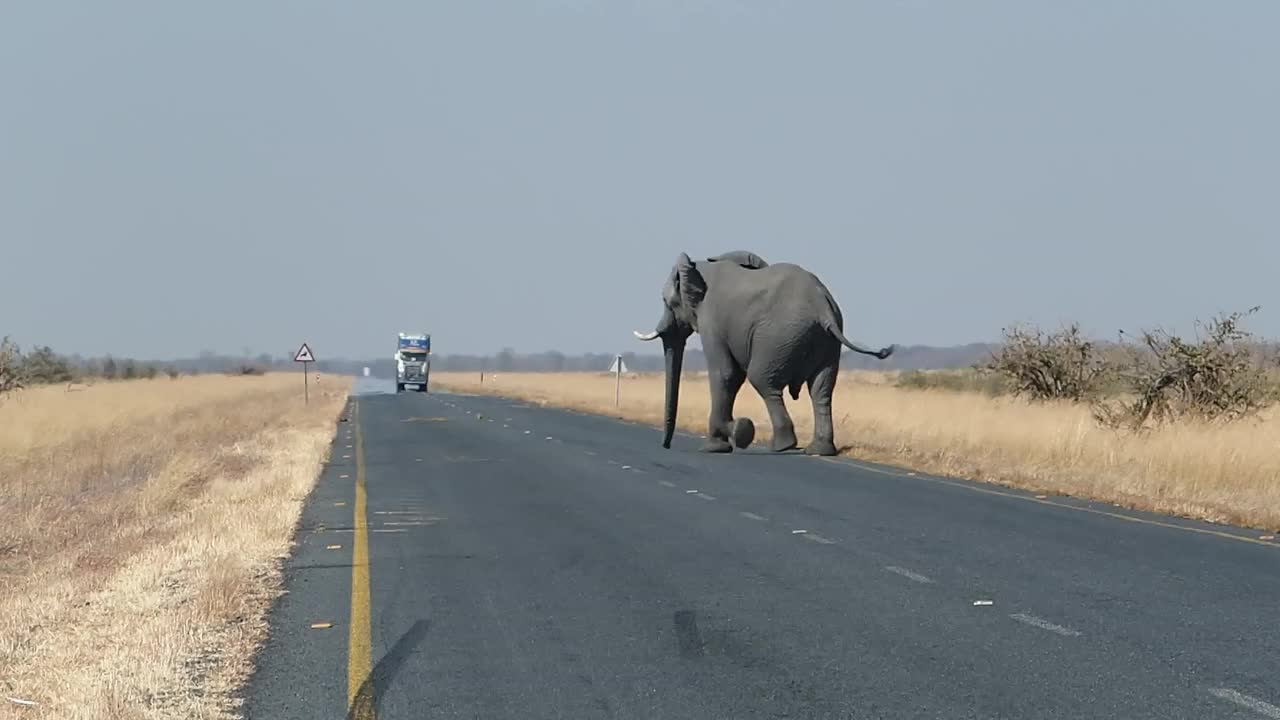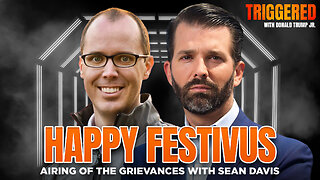Premium Only Content

Big Elephant Crossing the Road
In the early 1950s, carving out a road in the newly-created Tsavo National Park in Kenya involved “hacking through scrubland,” according to Dame Daphne Sheldrick in her memoir, Love, Life, and Elephants. Founder of the David Sheldrick Wildlife Trust, an organization that rescues orphaned elephants and rhinos, she describes the park landscape as “inhospitable country, covered in an entanglement of dense scrub vegetation infested with tsetse fly...” but “known for its diversity of indigenous species, including fearsome lions, breeding herds of elephants, and thousands of black rhinos.”
Today, the two-lane Mombasa-Nairobi highway (A109) dissects the park to form Tsavo East and Tsavo West. This causes problems for wildlife. Richard Leakey, Chairman of Kenya’s Wildlife Service, says that 18 elephants have been killed from collisions with trucks, and other wildlife become roadkill on a regular basis.
“We do want infrastructure where we can get to a good standard of living, and we do want wildlife,” said Leakey at a World Bank presentation in April 2017, where he spoke on current challenges to Kenya’s wildlife such as climate change, poaching, and infrastructure development. But he said reconciling the two needs facilitation and dialogue to move beyond pure opposition between conservationists and developers.
This Saturday, March 3, marks World Wildlife Day—an ideal time to consider whether infrastructure and wildlife can successfully intersect. This is especially important as roads and railways passing through wildlife-rich areas are on the increase across the globe.
Some experts say animals and vehicles can be managed if solutions are factored into development plans from the beginning.
Other specialists are skeptical.
“As we break off wildlife corridors because of infrastructure and increasing human populations we are putting the ecosystems on life support,” said World Bank lead economist Richard Damania. “There are some who believe we can manage these closed ecosystems, but it takes an immense amount of self-assurance and confidence in our understanding of ecosystems to suggest this with certainty.”
-
 22:45
22:45
Brewzle
19 hours agoI Went Drinking In A Real Bourbon Castle
40.6K4 -
 48:36
48:36
PMG
1 day ago $3.34 earned"Parkland Parent Speaks Out On Kamala Harris Using Victims"
32.9K5 -
 4:06
4:06
The Lou Holtz Show
17 hours agoCoach Lou Holtz’s Heartfelt Christmas Message 🎄 | Family, Faith & Notre Dame Spirit 💚 #christmas
24.2K -
![ROSEANNE BARR - Her Journey, TRUMP, and the MAGA GOLDEN AGE! [INTERVIEW]](https://1a-1791.com/video/s8/1/M/m/B/2/MmB2v.0kob.1-small-ROSEANNE-BARR-Her-Journey-T.jpg) 51:35
51:35
Dr Steve Turley
1 day ago $19.68 earnedROSEANNE BARR - Her Journey, TRUMP, and the MAGA GOLDEN AGE! [INTERVIEW]
59K54 -
 57:38
57:38
The Tom Renz Show
15 hours agoMerry Christmas - The Tom Renz Show Christmas
94.8K17 -
 2:59:10
2:59:10
Wendy Bell Radio
1 day agoThe Bridge Too Far
172K302 -
 1:03:45
1:03:45
Donald Trump Jr.
1 day agoHappy Festivus: Airing Our Grievances and Stopping The Swamp w/Sean Davis | TRIGGERED Ep.201
431K552 -
 1:30:30
1:30:30
Game On!
1 day ago $8.13 earnedTop 5 things you need to know for Sports Christmas!
76.1K5 -
 1:58:10
1:58:10
Robert Gouveia
1 day agoMatt Gaetz REJECTS Report, Sues Committee; Luigi Fan Club Arrives; Biden Commutes; Festivus Waste
300K240 -
 1:31:40
1:31:40
Adam Does Movies
1 day ago $16.50 earnedThe Best & Worst Christmas Movies! - LIVE!
118K8